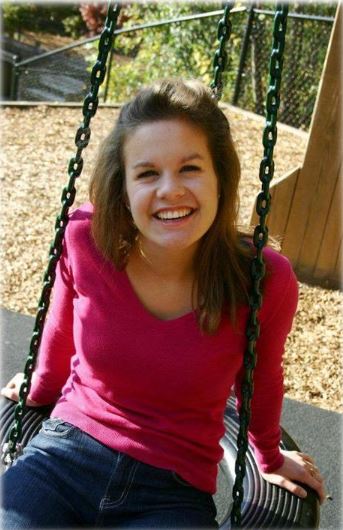Life Before LEAP
My name is Maddy, and I’m a 20-year-old college student studying public health at the University of North Carolina at Chapel Hill. As a very busy and engaged student, I am heavily involved with two campus organizations and two honor societies, I work 20-40 hours a week as a resident advisor for the housing department, and I take a full-time course load of science classes. We joke that we hardly have time to shower, and I didn’t think I had time to eat right. At home, my family ate very well: organic veggies, fresh fruit, good protein. We didn’t keep soda or much candy in the house at all and my parents cooked every night. When I first moved to college my first year, I was on a meal plan, but I realized pretty quickly that the oily, over-salted veggies and deep fried everything in the dining hall wasn’t really to my taste.
So, sophomore year rolled around, and I was sure that I could handle cooking for myself, even when my job required me to live on campus in the dorms. I moved into the third floor of a building without an elevator, where the only kitchen was on the first floor and was about the size of a broom closet — but I was still sure that I was making the right decision without a meal plan. I took the bus to get groceries every other week and tried to tackle the seemingly impossible task of feeding myself three square meals a day. I may have bitten off a little more than I could chew. It was way easier to pick up a burger on my way home or skip dinner altogether, especially when I had a lot of exams or assignments to do. I drank more coffee, ate anything that I could make in my microwave or whatever free food was being offered around campus (which was almost always pizza). If I did cook for myself, I would make a huge pot of pasta and tomato sauce and eat it for the whole week. I very rarely ate breakfast at all.
Surprisingly enough, I didn’t think that my eating habits were unhealthy. After all, I’m a college student, right? We draw exclusively from the four main food groups: pizza, ramen, coffee, and adult beverages. My mom had heard of the LEAP plan and suggested that I do it to clarify possible food sensitivities. Very few food sensitivity tests are as conclusive as the MRT, and we had tried cutting out gluten or dairy out of my eating for a couple of weeks without ever really seeing any results. I had infrequent stomach aches, occasional migraines and brain fog, occasional breakouts- symptoms that were debilitating and annoying on the day but not unmanageable on the whole. I didn’t feel like it was worth my time to address them, and cutting different things out of my diet hadn’t helped — I was losing patience. So, we did all of the preliminary LEAP testing and I was scheduled to start LEAP that summer. I started phase 1 in June, not really expecting for much of my life to change.
Starting LEAP
Going through the LEAP program was hard, especially at the beginning. I was cutting out everything that I had been consuming really frequently — caffeine, sugar, gluten, dairy. I had a huge amount of withdrawal symptoms, I woke up in the morning wanting nothing more than a cup of coffee, and I would hit a point around 7pm every day when all I wanted to do was dig into a pint of ice cream. I felt so tired. At the beginning, every moment was bargaining with myself whether to cheat, and phase 1 was hard for that reason. It was hard to use a community kitchen not on my floor, and even harder to feed myself entirely on food from my mini fridge.
Once I hit phases 2 and 3, it was a little easier to manage, and adding the foods was a great experience. It allowed me to fully appreciate the food that I was adding each day and ask my body how I felt about it. I started sleeping more soundly at night, I started to mellow out the peaks and valleys in my energy that usually followed my caffeine consumption.
Phases 4 and 5 only got better and better. By the end of phase 5, I felt great. I had energy to start and finish my workouts strong, I was happier, and I had no more migraines, stomachaches, painful acne, or brain fog. I was alert and attentive without caffeine and I started to pay attention to what I ate. I appreciated the food that I ate in its rawest form; I found a food co-op close by and I made a pilgrimage there every week to stock up on fresh, healthy food. I found out that I do, most definitely, have time to eat right and I found how important it is to keep away from my reactive foods. One of my sensitivities is to blueberries, surprisingly enough. I was sleeping over at a friend’s house and she made a smoothie with blueberries in the morning, and I drank some without thinking. I had the worst acne breakout of my life less than an hour later.
Eating Now
Even though I completed the LEAP program this summer, I still keep up with eating on program, especially avoiding my reactive foods. I find that if I do have to eat a reactive food, my system handles it much better than it used to, and I’m aware of the effects and can better manage them. The most significant impact of the program for me was a lifestyle change — LEAP completely changed the way that I think about my food. I have a new appreciation for eating foods that fuel my body, for veggies from the farmer’s market that taste just the way they’re supposed to. I read my food labels, and get excited about foods that are processed with ingredients I can pronounce. LEAP gave me an appreciation for food in a way that I don’t think many other programs could have, and I feel better than I thought possible.
For You
I would strongly encourage anyone suffering health complications to give LEAP a try. Here’s all of the things you’re going to tell yourself about why LEAP is hard and all of the reasons why you should do it anyway:
“But only eating a couple of foods? That’s ridiculous.” I love my phase 1 foods. I know that they’re my baseline, I know that those foods are going to make me feel good, every time. If I think I’m coming down with a cold — I grab some vitamin C and stock up on my phase 1s.
“But I don’t think I can keep up with the cooking.” If I can do LEAP with a mini-fridge and a microwave, you can do LEAP with a full service kitchen. Seriously. I believe in you.
“But organic food is expensive.” I’m a college kid, and I run a tight budget — I made it work. All the money I saved from eating out all of the time or drinking a grande pumpkin spice latte every day was money spent on eating healthy food, and making the switch definitely made a difference.
“I don’t think it’s going to change anything.” Don’t knock it until you try it. I didn’t know how good I could feel until I took the plunge and started the program. It’s not easy, but it is so, so worth it.
For a printable PDF, click here.

